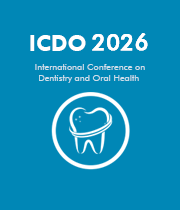Title: Challenges of rehabilitation with removable dentures without implants
Abstract:
In order to succeed in an oral rehabilitation with prostheses, we must overcome some challenges, and the most common ones are, reestablish the height of the lower third of the face and the posture position of the mandible, simultaneously return its function, esthetics, stability of the prosthesis when it is removable, in order to provide comfort and patient satisfaction
In this opportunity I will share with you the technique that I use at my own clinic in Brazil on daily basis and I also teach in my classes which is about how to overcome these kinds of challenges. This technique is based on the "technique of therapeutic cloning in total prosthesis" -written by Gomes, T. & Castro, in his books published in Brazil 2009 and 2017
In conventional oral rehabilitation, all technical and aesthetic modifications are included directly in the new prosthesis, which can cause muscle discomfort and patient dissatisfaction, since the patient did not have time to "try" this new condition.
I always work with gradual changes, testing the modifications directly on the patient. These gradual changes give condition to the mucosa and the neuromuscular system of health recovery and adaptation to changes. I see this part of the treatment as a therapy and this approach is valid for any case of oral rehabilitation, for instance, overdentures, (FPD) fixed partial denture over teeth or dental implants.
I will focus this presentation on conventional removable total dentures by making the modifications directly on the prosthesis that the patient is using and consist of:
- Determine the basal area, i.e., achieving the largest area of support for the base of the new total prosthesis;
- Replace the base portion of the prosthesis in contact with the mucosa to improve the adaptation, stability and treat a possible contamination by fungi that is quite common considering the prolonged use of these prostheses.
- Propose a new vertical dimension of occlusion which, in general, due to the use of prostheses and or-or reabsorption of the alveolar borders, is diminished. Using as parameters the free functional space, the space of pronunciation and the muscular perpetuation;
- Mandibular repositioning achieved through flat occlusal surfaces inducing the patient to a central physiological relationship
- Providing aesthetic changes (size, width, and position of the artificial teeth)
<>·When all technical and aesthetic goals are reached out and approved by the patient, these prostheses are duplicated (obtaining the clones). These clones are the individual trays. These trays are adjusted to the patient's mouth and the impression is done using condensation silicone (Thixoflex M-Zhermack) with the patient closing the mouth (occluding), and maxillomandibular relationships are guaranteed through a rigid bite registration (with the GC Pattern Resin - GC Dental or Duralay®). These moldings are filled with plaster and mounted in a semi-adjustable articulator.
The artificial teeth are mounted on a rigid test base, and the prostheses are tried for aesthetic approval and confirmation of the reproduction of the functionality of maxillomandibular relationships for the final prosthesis... In the lower arch, where the mobility of the tongue and the absence of a sufficient alveolar ridge compromise the stability and retention of the prosthesis, I use cheek and tongue impression. The artificial teeth already mounted at the base (neutral zone); however, no wax is added in the buccal and lingual areas. The impression material is placed in these areas (Thixoflex M - Zhermack) and the patient makes movements with the tongue and lips (smiling, swallowing etc.), printing out these muscles in function on these faces of the prosthesis.




